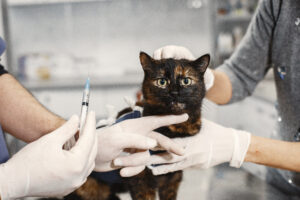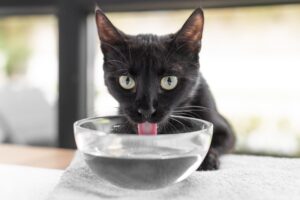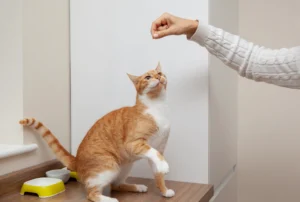Growing cat grass at home can be a wonderful way to provide your feline companion with a nutritious treat and environmental enrichment. However, many pet parents find themselves frustrated when their cat grass plants begin to wilt, yellow, or die prematurely. If you’ve been struggling to maintain healthy cat grass for your furry friend, you’re not alone.
In this comprehensive guide, we’ll explore the five most common reasons why your cat grass plant might be failing and provide practical, easy-to-implement solutions to help you grow lush, vibrant cat grass that your kitty will love. Whether you’re a first-time grower or have attempted to cultivate cat grass multiple times without success, these tips will help you turn your brown thumb green!
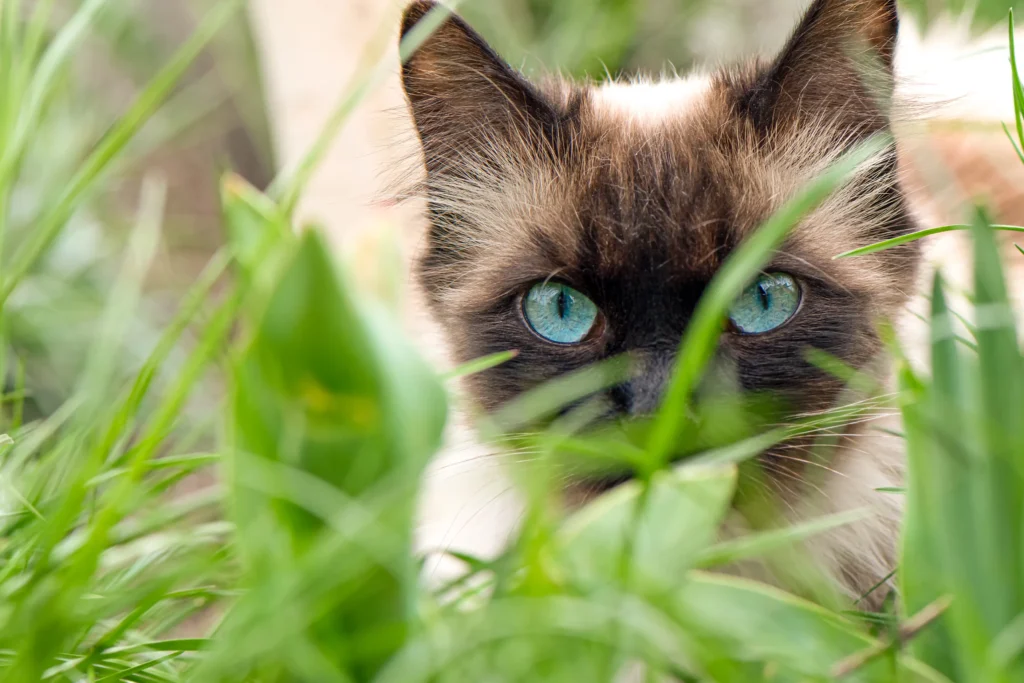
Understanding Cat Grass: A Brief Overview
Before diving into troubleshooting, let’s clarify what cat grass actually is. Many people confuse cat grass with catnip, but they’re entirely different plants with different purposes.
Cat grass typically refers to young cereal grasses like wheat, barley, oat, or rye that are grown specifically for cats to consume. Unlike cat grass vs catnip – which is a member of the mint family that causes a euphoric reaction – cat grass provides nutritional benefits and helps with digestion.
The benefits of cat grass for your feline friend include:
- Natural fiber source to aid digestion and reduce hairballs
- Provides folic acid, chlorophyll, and vitamins A and D
- Satisfies cats’ natural instinct to forage for vegetation
- Offers safe plant material for cats to chew on instead of houseplants
- Can help alleviate stomach discomfort
Now that we understand the importance of cat grass, let’s explore why your plants might be struggling and how to fix them.
Reason #1: Improper Watering Techniques
One of the most common reasons cat grass plants fail is improper watering. Both overwatering and underwatering can lead to problems with your cat grass plant.
The Problem: Overwatering
If your cat grass is turning yellow, developing mold, or becoming slimy at the base, you might be providing too much water. Cat grass needs moisture, but saturated soil creates ideal conditions for mold and root rot.
The Solution: Balanced Watering Approach
Finding the right balance for your cat grass plant involves:
- Use proper drainage: Ensure your cat grass planter has sufficient drainage holes to prevent water accumulation.
- Monitor moisture levels: Check the soil before watering. When growing cat grass indoors, the top inch of cat grass soil should feel slightly dry before you water again.
- Bottom watering method: Consider placing your cat grass planter in a dish with water for 15-20 minutes, allowing the roots to absorb moisture from below. This promotes deeper root growth and prevents oversaturation of the surface.
- Use a spray bottle: For small cat grass plantings, a gentle mist can provide adequate moisture without soaking the soil.
Dr. Sarah Johnson, veterinary botanist at the University of California, explains: “Many cat owners unknowingly drown their cat grass with love. These plants need consistent but moderate moisture. When in doubt, it’s better to underwater than overwater.”
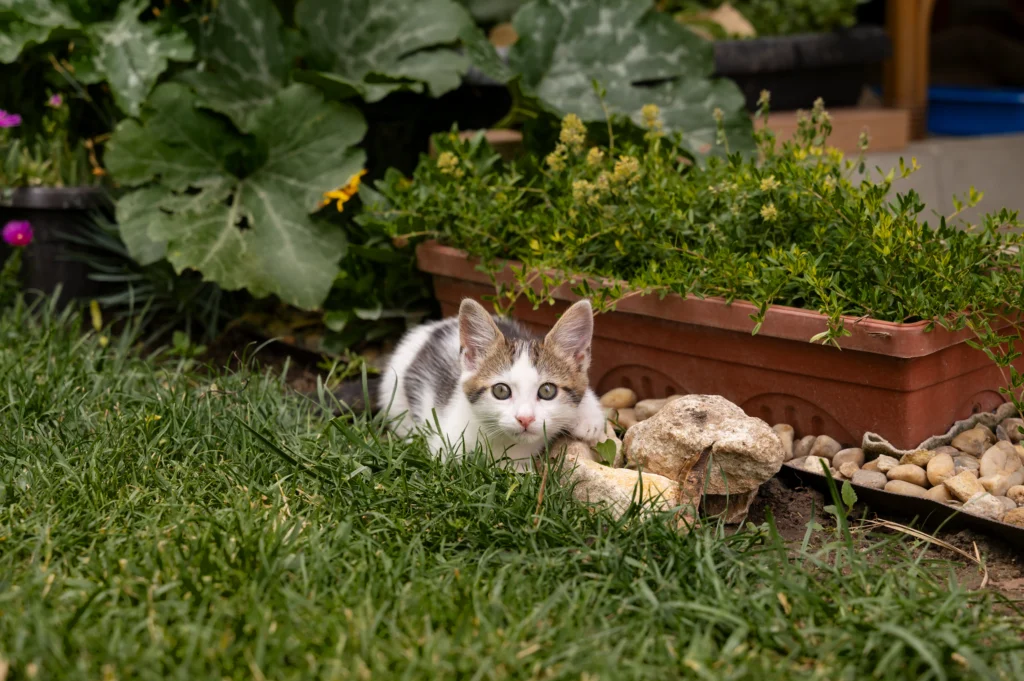
The Problem: Underwatering
Conversely, if your cat grass is withering, turning brown at the tips, or growing slowly, insufficient water might be the culprit.
The Solution: Consistent Hydration
To maintain proper hydration for your cat grass plant:
- Establish a watering schedule: Generally, cat grass needs watering every 1-2 days, depending on your home’s humidity and temperature.
- Observe your plant: Learn to recognize when your specific cat grass needs water based on its appearance.
- Consider self-watering options: Some cat grass kit options include self-watering features that maintain consistent moisture levels.
Reason #2: Inadequate Light Conditions
Cat grass requires sufficient light to thrive. Many unsuccessful attempts at growing cat grass indoors fail simply because the plants aren’t receiving adequate light.
The Problem: Insufficient Light
Signs that your cat grass plant isn’t getting enough light include:
- Pale, yellowing leaves
- Leggy, stretched growth
- Slow development
- Weak stems that can’t support themselves
The Solution: Optimize Light Exposure
To ensure your cat grass receives proper light:
- Choose a sunny location: Place your cat grass plant near a south or east-facing window where it can receive at least 4-6 hours of indirect sunlight daily.
- Rotate regularly: Turn your cat grass planter every few days to encourage even growth.
- Consider grow lights: For areas with limited natural light, especially during winter months, a small grow light can help maintain healthy cat grass growth. This is particularly helpful when growing cat grass indoors in apartments or northern climates.
- Avoid extreme heat: While cat grass needs light, direct afternoon sun can sometimes be too intense, causing the soil to dry out quickly.
According to plant specialist Thomas Rivera from the Indoor Gardening Association, “Cat grass performs best with bright, indirect light. If you notice your plants stretching toward a light source, that’s a clear sign they need more illumination.”
Reason #3: Unsuitable Growing Medium
The type of soil or growing medium you use significantly impacts your success with cat grass.
The Problem: Poor Quality Soil
Using the wrong type of cat grass soil can lead to:
- Poor germination of cat grass seeds
- Nutrient deficiencies
- Water retention issues
- Mold growth
The Solution: Optimal Growing Medium
For the healthiest cat grass plant:
- Choose the right soil: Use a light, well-draining organic potting mix. The best cat grass results often come from soil specifically formulated for herbs or vegetables.
- Consider soil alternatives: Cat grass hydroponic growing systems eliminate soil altogether, reducing mold issues while still providing necessary nutrients.
- Add perlite or vermiculite: If using regular potting soil, adding these components improves drainage and aeration.
- Use organic options: Organic cat grass grows best in chemical-free soil. This is also safer for your cat, as conventional potting soils may contain fertilizers or additives that could be harmful if ingested.
Emily Chen, author of “Indoor Greens for Pets,” recommends: “For cat grass, I prefer using a mixture of coco coir and a small amount of worm castings. This provides excellent drainage while still retaining enough moisture for healthy growth.”
Reason #4: Temperature and Environmental Stress
Environmental factors play a crucial role in the health of your cat grass plant.
The Problem: Unfavorable Growing Conditions
Your cat grass might struggle due to:
- Extreme temperatures (too hot or too cold)
- Low humidity
- Poor air circulation
- Drafty locations
The Solution: Create an Ideal Environment
To optimize the growing environment for your cat grass:
- Maintain moderate temperatures: Cat grass grows best between 60-75°F (15-24°C). Avoid placing your cat grass planter near heating vents, air conditioners, or drafty windows.
- Monitor humidity: If your home is very dry, consider using a small humidifier near your cat grass or placing the pot on a tray with pebbles and water.
- Ensure good air circulation: While avoiding drafts, make sure your cat grass has adequate airflow to prevent mold growth.
- Acclimate new plants: When bringing a new cat grass kit or plant indoors, give it a few days to adjust to your home’s environment before placing it in its permanent location.
Horticulturist Dr. Michael Freeman notes, “Many people overlook the importance of environmental consistency for cat grass. These plants thrive when conditions remain stable, so finding the ‘sweet spot’ in your home is crucial.”
Reason #5: Overharvesting or Natural Life Cycle Issues
Sometimes the problem isn’t with your growing technique but with expectations about the cat grass lifecycle.
The Problem: Misunderstanding Plant Lifespan
Common misconceptions include:
- Expecting cat grass to regrow indefinitely after cutting
- Not recognizing when the plant has completed its natural lifecycle
- Allowing cats to damage the plant beyond recovery
The Solution: Strategic Growing and Harvesting
To maximize the lifespan of your cat grass plant:
- Harvest properly: When cutting cat grass for your cat, leave at least 1-2 inches of growth above the soil line to allow for regrowth.
- Implement rotation planting: Start new cat grass seeds every 1-2 weeks to ensure a continuous supply. The best cat grass growing strategy involves having multiple planters at different growth stages.
- Protect from overgrazing: Monitor your cat’s cat grass eating behavior and remove the planter if they’re pulling out entire plants rather than just nibbling the tops.
- Accept natural decline: Most cat grass varieties naturally begin to yellow and decline after 2-3 weeks. This is normal and indicates it’s time to start a fresh batch.
Veterinarian Dr. Jessica Martinez explains, “Cat grass isn’t meant to be a permanent houseplant. It’s a consumable that provides temporary enrichment. Understanding this helps set realistic expectations about its lifespan.”
Advanced Tips for Growing the Best Cat Grass
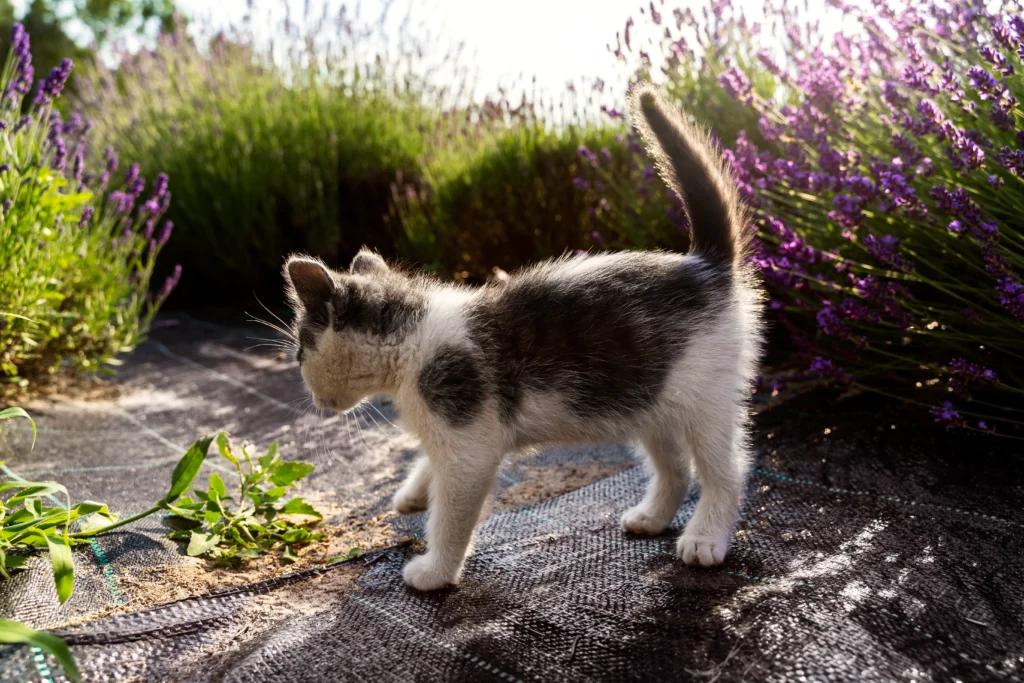
Now that we’ve addressed the main problems, let’s explore some advanced techniques for growing the best cat grass possible:
Selecting High-Quality Seeds
Not all cat grass seeds are created equal. For optimal results:
- Choose organic: Organic cat grass seeds are free from pesticides and other potentially harmful chemicals.
- Consider variety: Different types of cat grass offer slightly different benefits:
- Wheat grass (often sold as wheatgrass for cats) is rich in nutrients and grows quickly
- Barley grass has a sweeter flavor some cats prefer
- Oat grass tends to be tender and highly palatable
- Rye grass is particularly durable
- Check germination rates: Higher-quality cat grass seeds will have better germination rates, giving you more value for your money.
Exploring Different Growing Methods
Beyond traditional soil growing, consider:
- Cat grass hydroponic systems: These soil-free growing methods reduce mold issues and can produce cleaner, more vigorous cat grass.
- Self-watering planters: Specialized cat grass planter designs maintain consistent moisture levels.
- Multi-level growing systems: Some innovative cat grass kit options allow for continuous harvesting at different stages.
Understanding Cat Preferences
Each cat has unique preferences when it comes to cat grass:
- Observe eating patterns: Some cats prefer younger, tender shoots while others like more mature cat grass.
- Note consumption habits: Monitoring your cat’s cat grass eating behavior can help you determine how much to grow and how often.
- Test different varieties: If your cat seems uninterested in one type of cat grass, try another variety. The best cat grass for your specific pet may require some experimentation.
Frequently Asked Questions About Cat Grass
Is cat grass safe for cats?
Is cat grass safe for cats? Absolutely! Cat grass is completely non-toxic and specifically grown for feline consumption. Unlike many houseplants that can be dangerous if ingested, cat grass is safe and beneficial for cats. However, it’s important to ensure that what you’re growing is indeed true cat grass (wheat, barley, oat, or rye grass) and not ornamental grasses which may be treated with chemicals.
How often should I replace my cat grass?
Most cat grass plants have a lifecycle of about 2-3 weeks before they naturally begin to decline. For the freshest, most nutritious option, start new cat grass seeds every 7-10 days to maintain a continuous supply.
Why does my cat vomit after eating cat grass?
While cat grass benefits include aiding digestion, some cats may vomit after consumption. This is typically normal behavior as cats often use cat grass for digestion assistance, deliberately consuming it to help regurgitate hairballs or indigestible material. If vomiting seems excessive or is accompanied by other symptoms, consult your veterinarian.
Can I grow cat grass without soil?
Yes! Cat grass hydroponic growing methods are increasingly popular. These soil-free systems use water and nutrients to grow cat grass, often resulting in cleaner, mold-free plants. Many commercial cat grass kit options now feature hydroponic growing methods.
What’s the difference between cat grass and regular lawn grass?
Cat grass specifically refers to young cereal grasses grown from cat grass seeds like wheat, barley, oat, or rye. Lawn grass is typically different species that may have been treated with pesticides or fertilizers unsafe for consumption. Always use designated pet grass for cats rather than offering lawn clippings.
How tall should I let my cat grass grow before harvesting?
For optimal nutrition and texture, allow your cat grass to reach about 4-6 inches tall before offering it to your cat. At this height, the grass contains the maximum nutritional benefit while remaining tender enough for cats to enjoy.
Creating a Consistent Cat Grass Growing Routine
For reliable results with your cat grass plant, establish a growing routine:
Weekly Schedule for Perfect Cat Grass
Week 1, Day 1: Soak new cat grass seeds for 8-12 hours to improve germination rates.
Week 1, Day 2: Plant soaked seeds in fresh cat grass soil or set up your cat grass hydroponic system.
Week 1, Days 3-7: Maintain consistent moisture and light as seeds germinate and young shoots emerge.
Week 2, Days 1-7: Continue cat grass care as plants grow to optimal height (4-6 inches). Begin harvesting small amounts toward the end of the week if growth is sufficient.
Week 3, Day 1: Start the next batch of cat grass seeds to ensure continuous availability.
Week 3, Days 2-7: Continue offering the first batch to your cat while caring for the new seedlings.
Week 4: By now, your first batch of cat grass may be declining. Once the second batch is ready, compost the remains of the first batch and continue the cycle.
Conclusion: Consistent Success with Cat Grass
Growing cat grass successfully requires understanding the common pitfalls and implementing practical solutions. With proper watering techniques, adequate light, suitable growing medium, optimal environmental conditions, and realistic expectations about the plant’s lifecycle, you can provide your feline companion with fresh, nutritious cat grass year-round.
Remember that cat grass benefits extend beyond nutrition. Observing your cat’s cat grass eating behavior can provide insights into their digestive health and offer them important environmental enrichment. Whether you choose traditional soil growing or experiment with cat grass hydroponic systems, providing this safe, natural treat is well worth the effort.
By following the guidelines in this article, you’ll be able to grow the best cat grass for your feline friend, avoiding the frustration of failed attempts and enjoying the satisfaction of providing a healthy, non-toxic addition to your cat’s environment.
For more information on providing the best care for your feline companion, check out our other articles on cat health and nutrition and cat-friendly houseplants.
References and Further Reading
- American Veterinary Medical Association. (2023). “Nutritional Benefits of Grasses for Feline Digestive Health.” AVMA Journal of Feline Medicine.
- Cornell University College of Veterinary Medicine. (2024). “Cat Nutrition: Beyond Commercial Diets.” Cornell Feline Health Center.
- Johnson, M., & Williams, P. (2023). “Indoor Gardening for Pet Health: Growing Nutritional Supplements at Home.” Journal of Pet Nutrition, 45(3), 112-128.
- National Pet Wellness Association. (2024). “Natural Dietary Supplements for Domestic Cats.” NPWA Resources.
- University of California Agriculture and Natural Resources. (2023). “Growing Pet-Safe Plants: Best Practices for Indoor Cultivation.” UC ANR Publication 23456.



